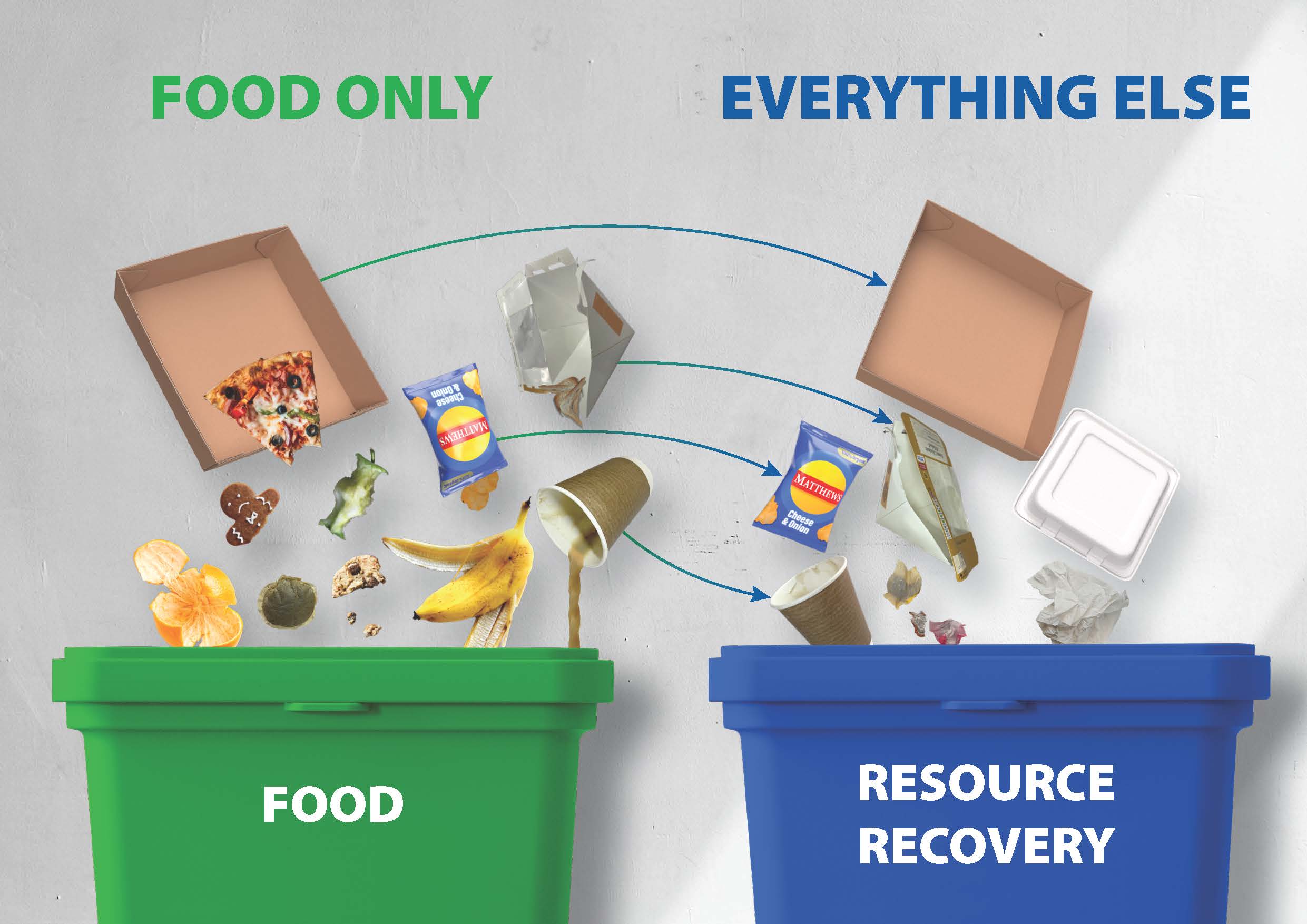
Please find information and guidance on the 'Useful and Relevant Links' section on this page.
After listening closely to building managers and recycling bin users, we have simplified the messaging to change the two-bin system to 'Food Only' and 'Resource Recovery'. Please update your bin stickers with the resources below.
There are also new posters which have been designed to help explain how the system works. If you have the space please print these out and display around the bin areas.
New Food bin stickers:
| JPEG: | PDF: |
| Food bin sticker 1 | Food bin sticker 1 |
| Food bin sticker 2 | Food bin sticker 2 |
| Food bin sticker 3 | Food bin sticker 3 |
| Food bin sticker 4 | Food bin sticker 4 |
New Resource Recovery bin sticker:
| JPEG: | PDF: |
| Resource recovery bin sticker | Resource recovery bin sticker |
Redesigned posters:
| JPEG: | PDF: |
| Poster both bins 1 | Poster both bins 1 |
| Poster both bins 2 | Poster both bins 2 |
| Poster resource recovery 1 | Poster resource recovery 1 |
| Poster resource recovery 2 | Poster resource recovery 2 |
Please email EM Facilities Management with any questions.
